Chances are, you already know a thing or two about backlinks. They’re a great contributing factor to your website’s growth and rankings, which is of utmost importance to any business.
It’s crucial to validate your link building efforts by tracking your backlinks: in fact, it’s nearly impossible to build an effective SEO strategy without doing this.
But how can you track backlinks the most efficient way? Are there any techniques and tips that your competitors don’t know? How do you get the most of your backlink campaign and know what your backlinks are telling you?
Don’t worry, we’ve got you covered. In this article, we will focus on less common aspects and expert tips on backlinks tracking, turning you into a backlink whisperer.
1. Measuring blogging outreach effects
Blogger outreach is, perhaps, the most efficient way to build your precious backlinks and drive quality traffic. Getting the right links to your website is a solid strategy to get a boost in rankings and long-term success.
You need to make sure the backlinks are indexed and alright — and analyze which of them are affecting your rankings most.
How do you do that with a backlink tracker?
Let’s look at an example:

The backlinks overview graph tells us that in the last three months, we built thirteen new links from relevant blogs, and lost three.
These are the backlinks we should investigate to find out why and on which blogs this happened and see if we can get these backlinks back.
We can easily find out which backlinks are lost by looking at the “Status” column and sorting by “Last Visited”:
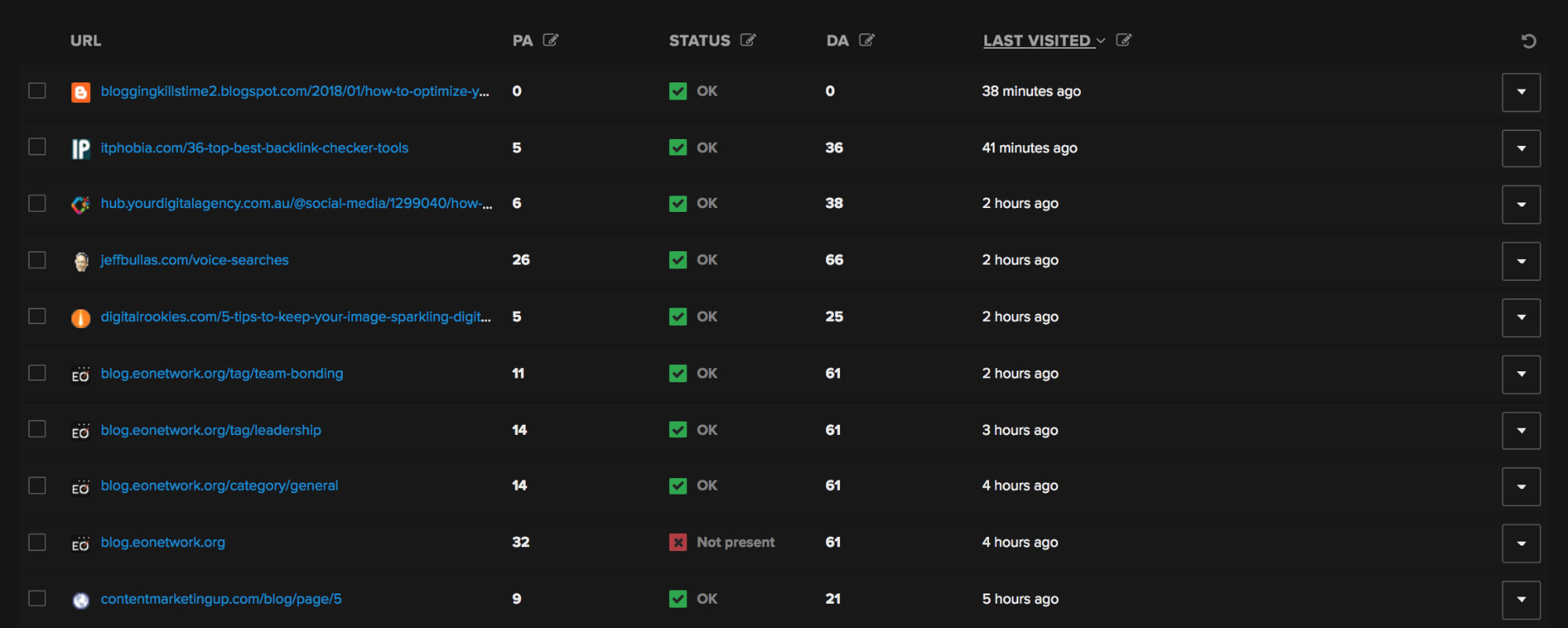
How do these backlinks influence and correlate with our website’s average rankings?
Let’s go to the website’s graphs section.
We will pull out an average rank chart for our most important segments:
- Backlink keywords segment: a segment of all keywords related to backlinks.
- Rank tracking keywords segment: a segment of all keywords related to rank tracking.
- Report keywords segment: a segment of all keywords related to reports.
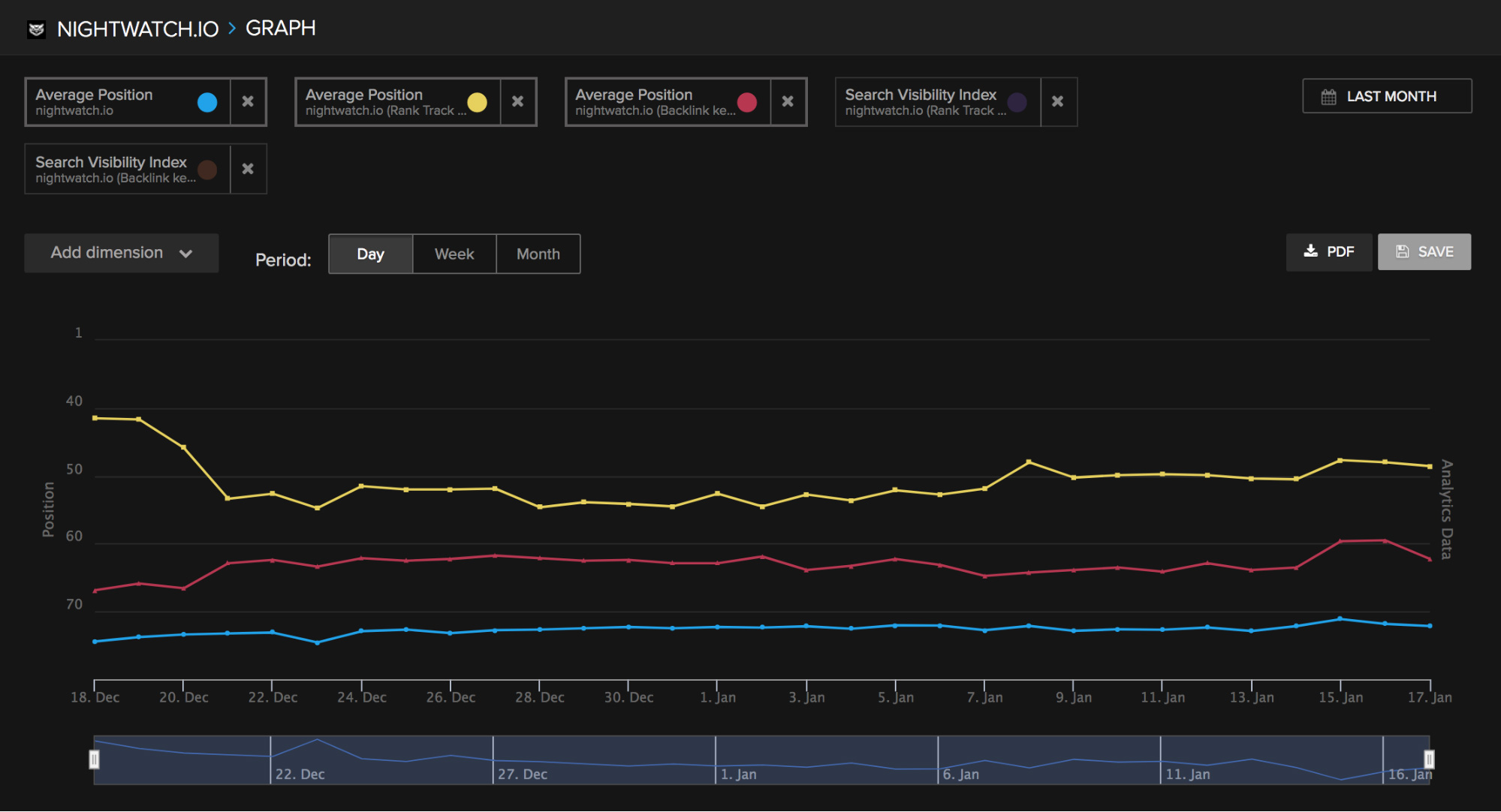
We can see that we had a couple of spikes on the rankings:
- on January 8 on “rank tracker” keyword segment
- on January 15 on “backlink monitoring” keyword segment
Then, we can investigate which backlinks helped to achieve the rankings goals by looking back at the backlinks table and finding the links that appeared in the interval before there was a visible boost (like shown on the screenshot above).
2. Tracking and reporting suspicious backlinks
Not all backlinks are beneficial and healthy; some may come from websites that are penalized by Google, have stolen content, or are otherwise dubious.
That’s why you should keep an eye out for link-farms or other suspicious websites linking to you. Furthermore, Google encourages us to report those backlinks to their Google Disavow Tool in Search Console so they can exclude them from attribution to your website rankings.
You can find suspicious websites linking to you by filtering them by page authority and domain authority:

Here are the results we are looking for:
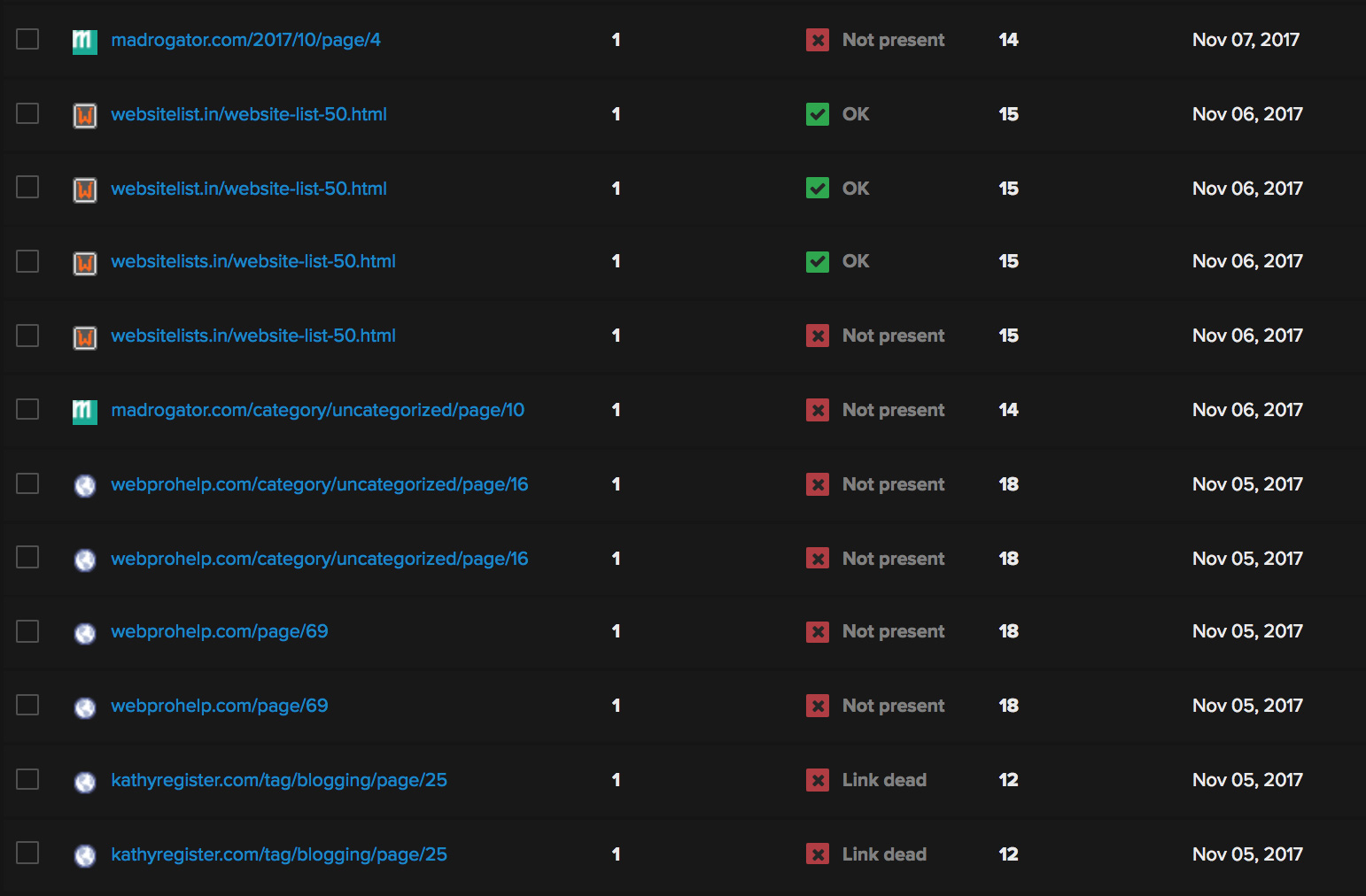
These are usually typical link farm sites that, unlike a real farm, don’t grow anything useful for us. They just do more harm than good.
Once we identify the harmful links, we can export the backlinks and import them to Google Disavow.
3. Tracking live status of your backbone backlinks
Every website should have a few backbone backlinks — these are the core ones, and it’s essential to know whether they are live or offline — especially if you attained them with a compensation such as link replacement or any other monetary or non-monetary resource.
Ideally, your backlink tracker will routinely check the status of your backlinks and find out if they are online and whether they have the right rel attribute (i.e. if the link is “nofollow” when it should be “dofollow”).
Nightwatch automatically finds and tracks all backlinks leading to your website, arming you with the essential details you’ll need in order to fix the important links that got removed, before they affect your rankings.
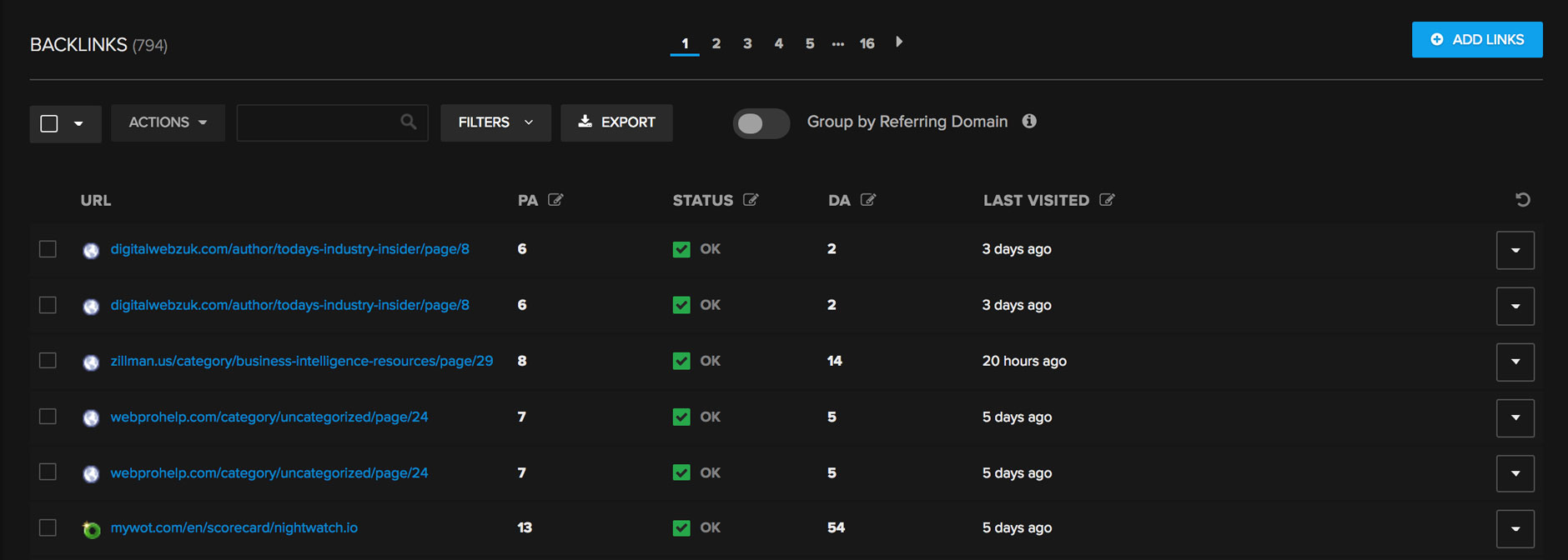
If the crawler has not yet found those backlinks, you can just add them manually.
4. Measuring even backlinks stream
Every healthy backlink building campaign should have a steady and even stream of backlinks coming to your site in terms of total number of backlinks, referring domains, and IPs, showed in backlink diversity section.
By splitting our backlinks into specific segments, we can observe this trend in detail.
Each backlinks segment should follow a similar linear direction — sometimes even exponential when it starts going viral — this indicates healthy, well-balanced organic SEO growth.

Furthermore, we could split backlinks into the following segments and observe if they follow the same trend:
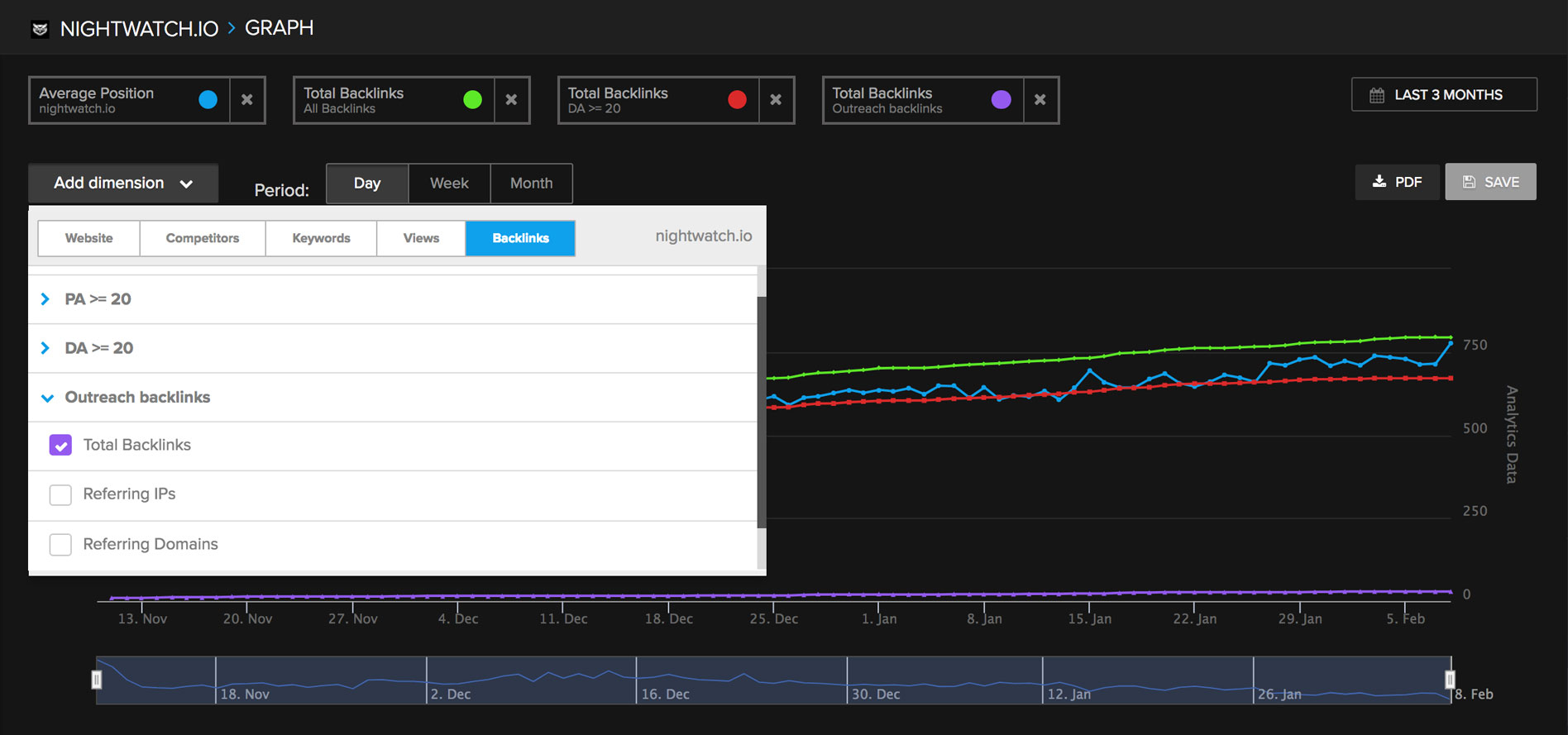
- Outreach backlinks: links gained by guest posting and exchanging links with related and similar websites.
- Organic backlinks: links created voluntarily by other people / users.
- High / medium / low quality backlinks: links pointing to our site from a website with a certain domain and page authority.
Bonus tip: besides analyzing the impact of certain backlinks segments on our rankings, we can use this information to spot new opportunities for backlink acquisition and their anchor text optimization. Sometimes, even a simple email asking a person to change the anchor text can bring a put a few bricks on the pyramid.
5. Measuring impact on ranking changes
The best for last: here is the most hidden and the most beneficial backlink tracking opportunity.
As we already know, the main purpose of backlink tracking is understanding how they affect our website rankings. However, the effect of individual backlinks on your rankings is usually very subtle, so to understand the impact better, you should… that’s right: segment.
SEO segmentation enables us to measure impact with higher sensitivity, which in return, makes it possible to understand which kind of backlinks have the greatest influence on certain segments of our websites.
Imagine you have a website selling sport shoes.
It is split into the following segments: running shoes, basketball shoes, outdoor shoes, gym shoes, and so on.
We can create a segment of keywords for each of the niches that our website is targeting. In this case, let’s create a segment for “running shoes,” including all the keywords that contain “running” in the keyword:
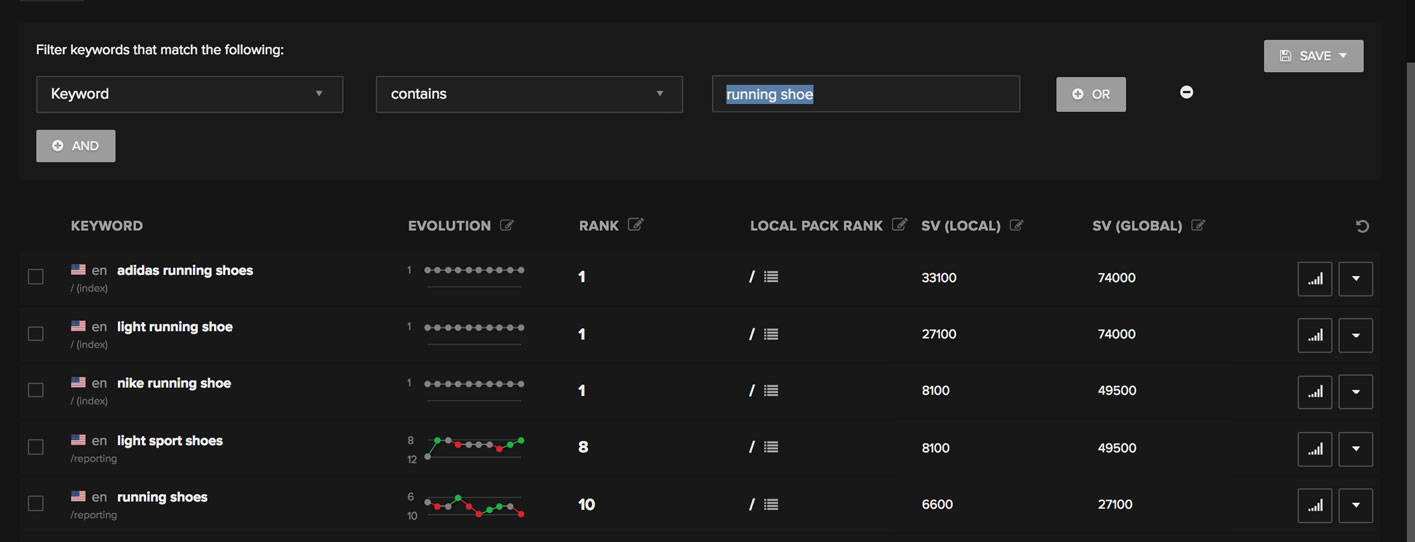
Now, for each of the categories, let’s create a backlink segment:
- The backlinks that contain a category’s main keyword in the anchor text, for example, running shoes, we will call “In anchor: running shoes”, or
- The backlinks that point from the pages that contain the main keyword running in the title, we will call “In title: running.”

Now, let’s visualize the average rank of the “backlink” keyword segment and the average rank of all keywords on our website’s graph. We want to see the number of all backlinks and backlink segments we created, and through that, the number of backlinks that match them:
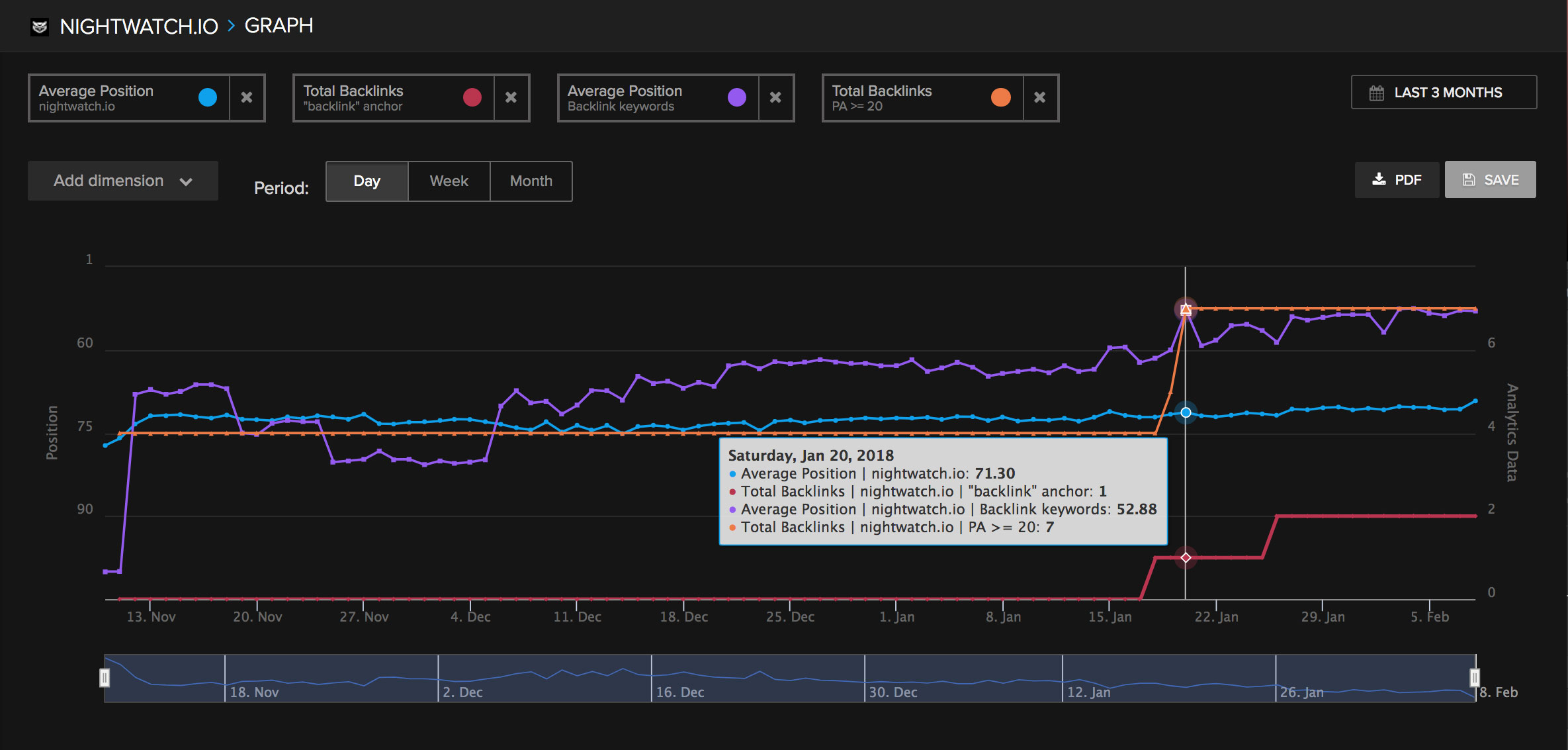
On this graph, we see that there were two new backlinks on January 18 with the anchor text containing keyword “backlink” in them. Two days after that, on January 20, we can see how the average ranking segment of all backlink-related keywords spiked. Voila!
Using this approach, you can easily see how the average rank correlates with general backlinks as well as backlinks originating from pages containing the target title or anchor text.
This way, you can focus on getting the kind of backlinks to subpages that that will have the highest impact on your site. Result? Higher and steadier website rankings.
Now you know how to monitor and discover how and which backlinks influence your website’s rankings. Equipped with this knowledge, you can focus on building backlinks that have the greatest impact on your rankings and drive the most traffic, sending you well on your way to making smart, evaluated decisions in your SEO campaigns.
Are there any other expert tips you would like to share? Leave your questions and comments in the comment section below!
